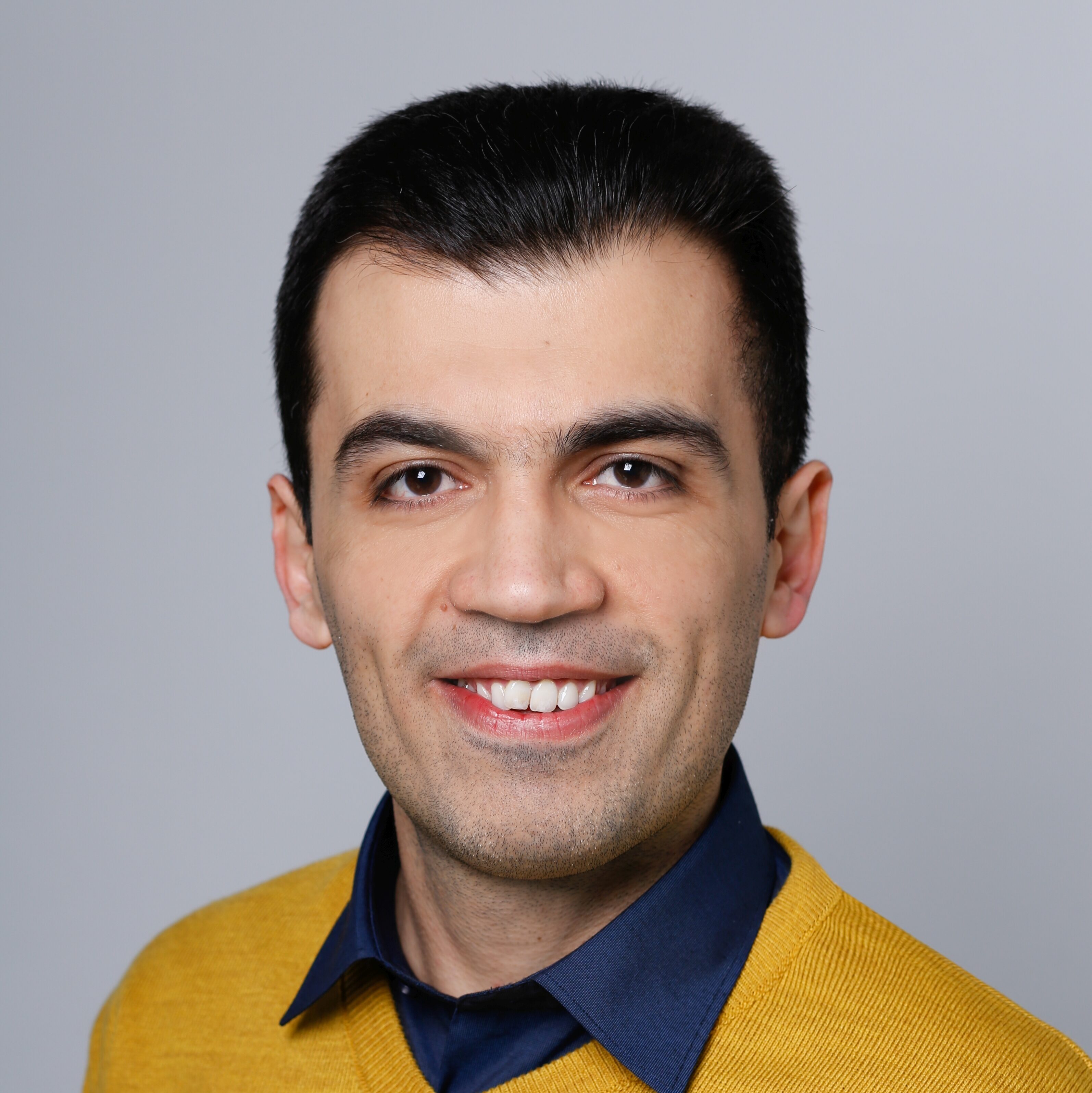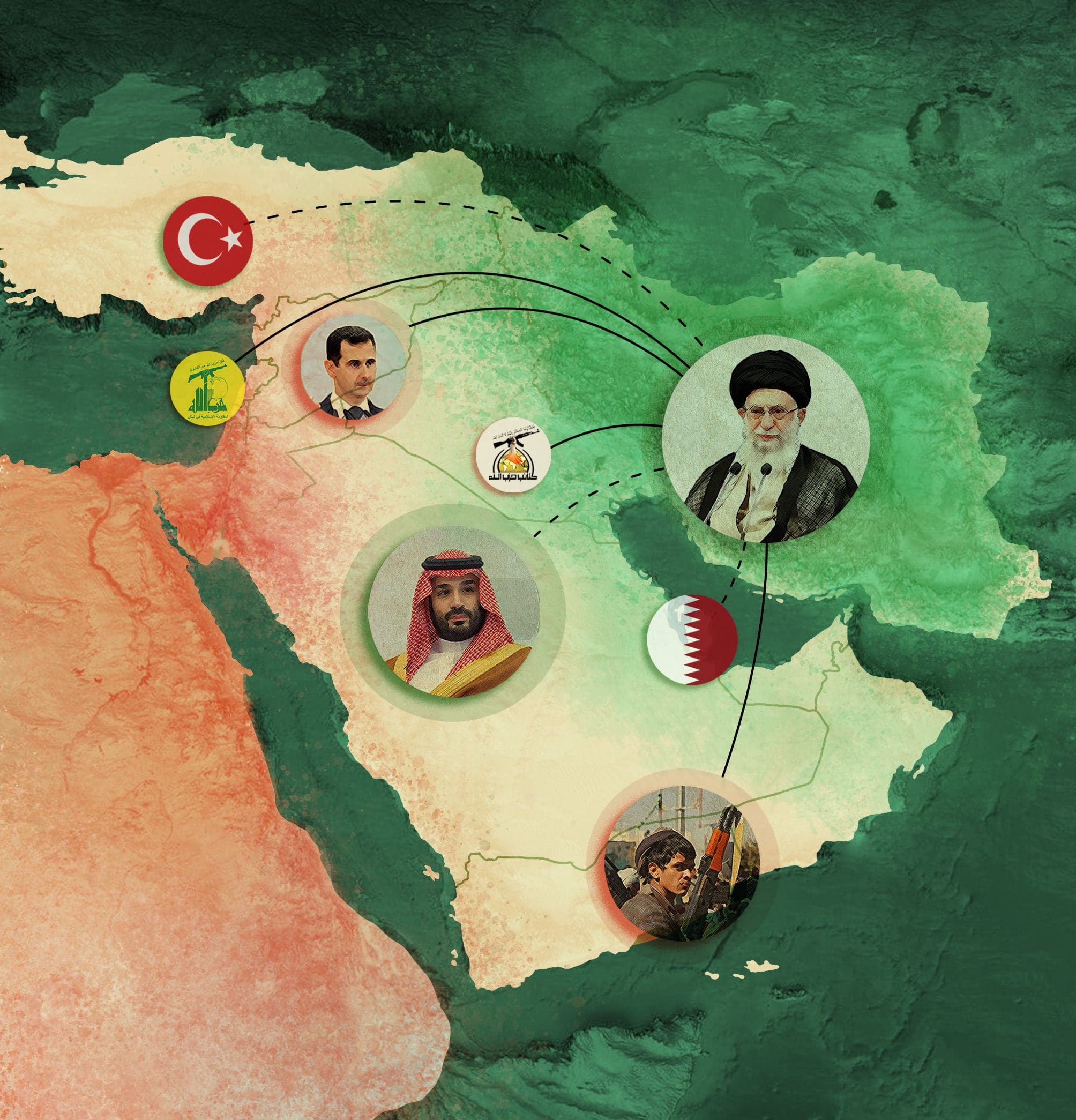
Iran in the Middle East: Conclusion
April 2024
The ongoing war on Gaza and Israel’s genocidal military campaign have heightened tensions between Iran, the United States, and Israel. Washington and its allies also attribute these tensions to Tehran’s continued support for regional actors—members of the so-called “Axis of Resistance.” In addition to Hamas and Palestinian Islamic Jihad, the axis includes Yemen’s Houthis, Syria’s Assad regime, and many Iraqi Shia militias. As the chapters in this dossier have detailed, amid the war on Gaza, Iran’s leadership has responded by emphasizing the country’s role as the linchpin of this axis. This response reiterates Tehran’s long-standing claim of championing the Palestinian cause and, more broadly, the interests of the Muslim world. It distinguishes Iran from its neighbors by reminding observers of its consistent opposition to Israel, having invested blood and treasure in resisting the Israeli domination of Palestinian lands.
The axis, however, serves a dual purpose. In the sixth chapter, Shahram Akbarzadeh noted that Tehran also views the network of pro-Iran actors as a deterrent against hostile actions and a key component of its “forward defense” strategy. It may be ironic, therefore, that Hamas’s actions on October 7 of last year brought international attention to Iran and its power projection in the Middle East. This attention is only growing with the Houthis’ increasing challenge to international maritime trade and transit in the Red Sea. However, as Faozi Al-Goidi argued in chapter four, the Houthis are neither a mere proxy of nor fully autonomous from Tehran.
Developments at the end of 2023 suggest that President Ebrahim Raisi was not prepared to handle new challenges. Prior to recent escalations between Iran and the United States, Tehran seemed to be making good progress in mending relations with its neighbors and advancing its own interests. For instance, in the fifth chapter, Muhanad Seloom charted Iran’s increasing influence in Iraqi politics. Similarly, and within the context of Iran-Syria relations, Hamidreza Azizi emphasized the persistence of Tehran’s involvement in Syria despite Bashar al-Assad’s growing ties with Arab states.
Crucially, as multiple authors observed, Iran’s renewal of diplomatic ties with Saudi Arabia in March 2023, under Chinese auspices, was an important achievement for Raisi’s government. This rapprochement was significant on at least three levels. First, as Mehran Kamrava asserted in the first chapter, it confirmed that Iran is prioritizing a policy of neighborly relations to mitigate international isolation. Second, it demonstrated Saudi Arabia’s changing calculus in its relations with Iran, as Fatima Alsmadi’s chapter outlined. And third, it revealed China’s diplomatic clout as a guarantor of a significant agreement between two regional rivals.
Resuming diplomatic ties with Saudi Arabia, however, had much broader implications beyond the immediate region, as the dossier’s second section explored in detail. It allowed the Iranian leadership to present itself to Beijing as a reliable and rational partner, giving more force to its “Look East” orientation. Iran receiving full membership in the Shanghai Cooperation Organization (SCO) in July 2023, after years of wrangling and negotiation, was a tangible outcome of this orientation.
President Raisi’s gains in pushing through Iran’s “Look East” policy offer significant advantages to Iranian ambitions for a new world order. Previous administrations saw the policy as an economic opportunity and a panacea for Iran’s isolation. The multitude of U.S. and international sanctions on Iran has devastated the economy and resulted in widespread public discontent and bread riots. The “Look East” policy was expected to alleviate the economic impact of sanctions. However, under Raisi, and in the wake of the war on Gaza, the policy has gained greater political significance.
Many of the authors recognized that Raisi’s successes were built on previous administrations’ policy approaches. Luciano Zaccara termed this a “non-strategy,” contending that it marks “a continuation of established Iranian foreign policy rather than offering a distinct approach.” However, other chapters’ analyses were in tension with this. Kamrava pointed out that, despite building on past approaches, Raisi was the first to formalize the “Look East” policy into doctrine. Similarly, Azadeh Zamirirad, while recognizing certain policy continuities, underscored the increasing integration of the “Look East” and “Neighborhood” policies under Raisi.
Ultimately, while the authors’ analysis diverged on certain topics, their chapters all emphasized Iran’s crucial role in shaping the regional political landscape. 2024 will be a critical year for the region. The ongoing war in Gaza, the U.S. elections, and domestic Iranian politics will all continue to shape the contours of Iranian foreign policy.
Arguably, the Iranian leadership has made a deliberate return to the ideological declarations of early revolutionary days and renewed calls for a new world order. The Supreme Leader Ali Khamenei has lauded the rise of Asia and the decline of the United States.i From his perspective, closer ties with China and Russia do not simply mitigate the impact of sanctions, but herald the dawn of a new era.
Iran’s revisionist foreign policy has gained a new life during Raisi’s presidency and the recent escalation of tensions. It differs from earlier, pragmatic approaches and takes aim at the United States as a hegemonic power that dominates international institutions and unilaterally sets norms for an unjust world order, a view that has been arguably vindicated with U.S complacency in the ongoing war on Gaza. This worldview presents the framework for Iranian foreign engagement and decision-making; any rapprochement with its neighbors must align with this overarching framework, and this goes to the core of Iran’s approach.
Despite the regional backlash to its proxy relations over the last decade, Iran is unlikely to give up its patronage network. The Iranian leadership, now energized under President Raisi, views rising regional tensions as a vindication of its vision; it rejects past efforts at finding common ground with the West as misguided at best, treacherous at worst. The Raisi-aligned conservatives’ victory in the March 2024 parliamentary election has cemented this political shift. As Raisi’s camp consolidates power and reverses the course of domestic and foreign policy, the prospect of a compromise over contested issues, such as the nuclear deal, continues to diminish. This changing political landscape—coupled with Iran’s increasingly revisionist foreign policy in search of a post-Western world order—will continue to present serious obstacles to improving relations between Iran and its neighbors.
Please note that this dossier was compiled before Iran’s drone and missile attack on Israel on April 13. The strike marked Tehran’s first direct attack on Israel, framed as a retaliation for the Israeli strike on the Iranian consulate in Damascus on April 1. This dossier provides insights into Iran and its policy thinking. The analysis does not reflect recent developments.


